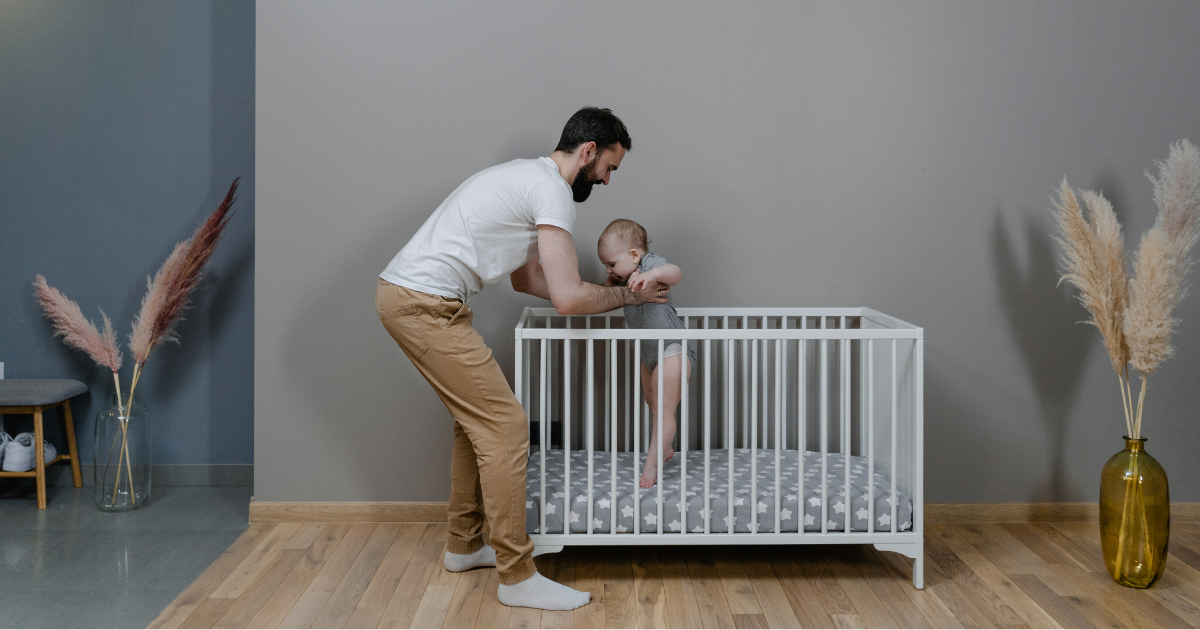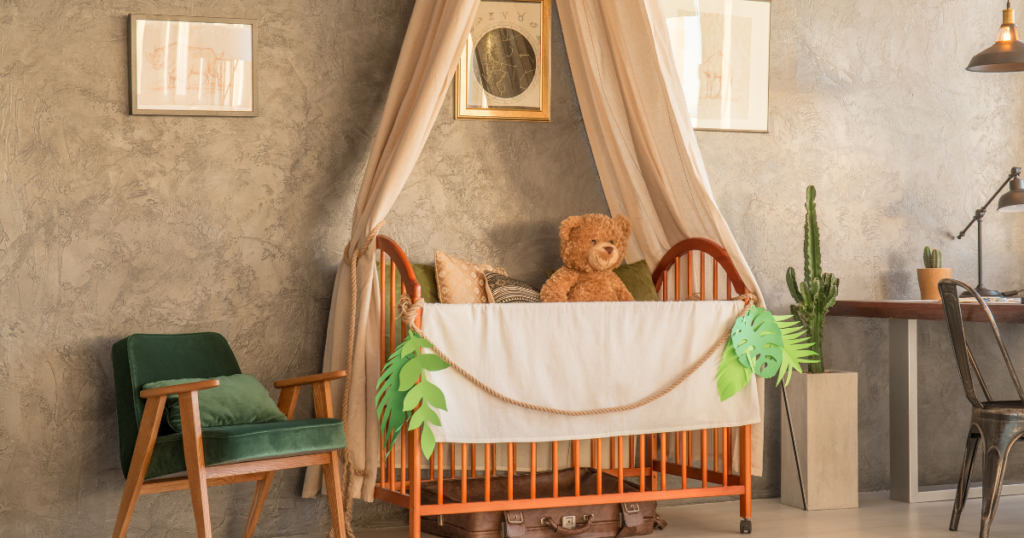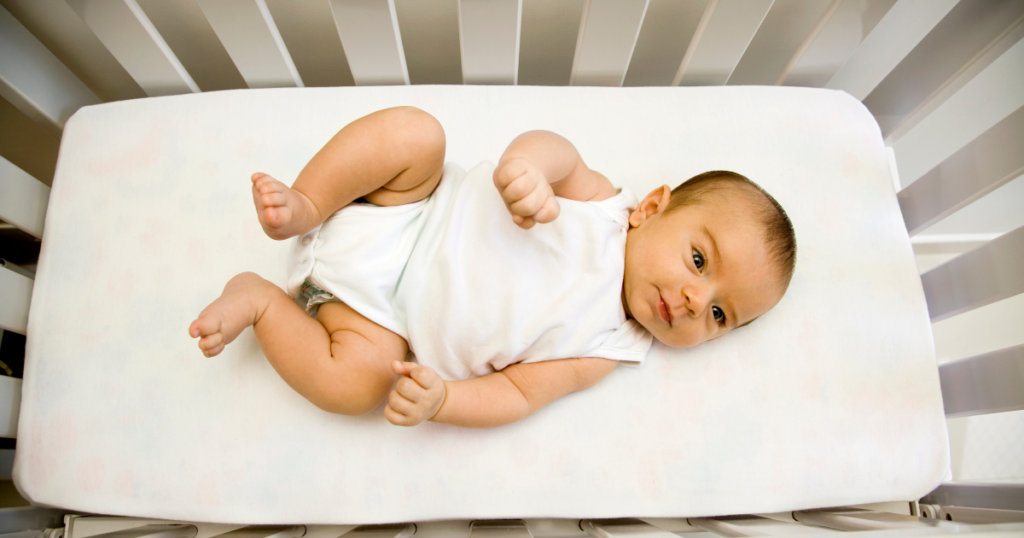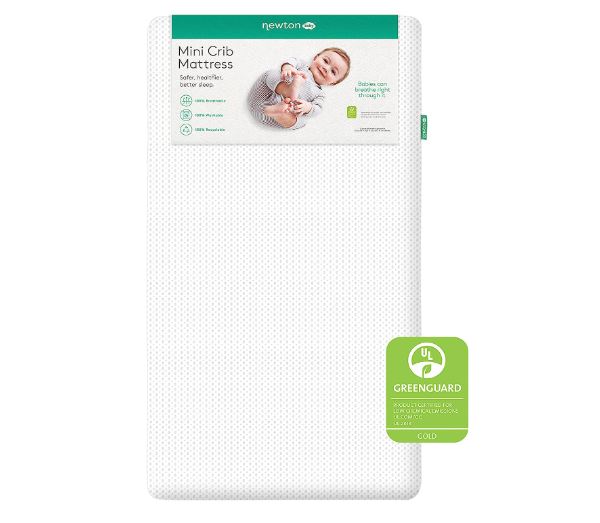A mini crib is a smaller, more compact version of a standard crib, designed to provide a safe and comfortable sleeping space for your little one. Understanding how long a baby can stay in a mini crib is crucial for both their growth and safety.
This article provides an in-depth look at the duration a baby can stay in a mini crib, factors affecting this duration, and tips for transitioning to a bigger bed.

The Lifespan of a Mini Crib
On average, a baby can use a mini crib until they reach 18 months old, or until they start to climb out, whichever comes first.
However, it’s important to note that every baby is different, and some may outgrow their mini cribs earlier than expected. It’s always essential to monitor your child’s development closely to ensure their sleeping arrangements remain safe and comfortable.
Factors that Influence How Long a Baby Can Stay in a Mini Crib
There are several factors that influence how long a baby can stay in a mini crib. These include:
1. Baby’s Size and Growth Rate: The size and growth rate of the baby is a primary factor. Some babies grow at a faster pace and may outgrow the mini crib sooner than others.
2. Baby’s Mobility: The more mobile the baby is, the less suitable the mini crib becomes. Once a baby starts to roll over, sit up, or attempt to climb, it may be time to transition to a larger crib or bed for safety reasons.
3. Safety Concerns: Safety is paramount when it comes to babies. If your baby starts to get their arms and legs stuck between the slats of the mini crib or if they begin trying to climb out, it’s a clear sign that they have outgrown the crib.
4. Comfort: Comfort is another crucial factor. If the baby seems uncomfortable or cramped in the mini crib, it’s a good indication that a transition to a larger sleeping area is needed.
5. Weight Limit: Every mini crib comes with a weight limit. It’s essential to consider this and monitor the baby’s weight to ensure the crib is still safe for them.
6. Manufacturer’s Guidelines: Pay close attention to the manufacturer’s guidelines regarding the use of the mini crib. They will provide specifics about the maximum weight and height the crib can comfortably and safely accommodate.
Remember, while these factors provide general guidelines, each baby is unique. Hence, parents should closely observe their child and make decisions based on individual needs and development.
What is the Weight and Height Limits of a Mini Crib?
The weight and height limits of a mini crib can vary significantly based on the specific model and manufacturer. However, some common ranges can provide a general guideline.
Weight Limit: Mini cribs generally have a weight limit that falls between 22 and 50 pounds. For instance, the Origami Mini Crib has a slat strength of 135 lbs, while the Edgewood 4 in 1 Convertible Mini Crib has a maximum weight limit of 50 lbs, and the Ava 4 in 1 Convertible Mini Crib has a maximum weight limit of 40 lbs.
Height Limit: Unlike weight limits, height limits for cribs are not typically specified by manufacturers. Instead, the decision to transition a child out of a crib is often based on their mobility (such as when they start to climb) rather than their height.
However, most mini cribs measure between 36-43 inches in length and 24-28 inches in width, with a side height of around 20 inches, providing some guidance on the physical size of the child that can be accommodated.
Always refer to the manufacturer’s guidelines for the specific mini crib you’re considering to ensure it’s suitable for your baby’s weight and size.
Transitioning from a Mini Crib
The transition from a mini crib to a toddler or twin bed typically occurs when your child begins showing signs of outgrowing the crib, such as attempting to climb out or appearing cramped. Here are some tips to make the transition smoother:
- Start Gradually: Begin by introducing the new bed during nap times before transitioning to night-time sleep.
- Maintain Consistency: Try to keep bedtime routines consistent to provide a sense of familiarity and security.
Mini Crib vs. Regular Crib
When it comes to choosing a crib for your baby, the decision often boils down to two main options: a mini crib or a regular crib. The key difference between these two lies in their size. A mini crib is simply a smaller version of a standard-sized crib with dimensions typically around 24 inches wide by 38 inches long.
Mini cribs are designed to provide a compact sleeping space, making them a great choice for smaller rooms or for parents who require mobility. They often come with added advantages such as being foldable and easily movable from room to room. However, it’s important to note that unlike standard cribs, there are no legal requirements for mini crib sizes.
On the other hand, regular or full-size cribs are larger and more spacious. They are the traditional choice for most parents and are more likely to come with additional features. While they may take up more space, they tend to last longer as your child grows.
You should also know that mini cribs are generally less expensive than regular cribs, but they are also narrower and shorter by about 10-15 inches. This could mean that your baby outgrows a mini crib faster than they would a regular crib.
Ultimately, the decision between a mini crib and a regular crib depends on your specific needs and constraints, including space, budget, and lifestyle.
Choosing the Right Mini Crib
Choosing the right mini crib for your baby involves considering several factors to ensure safety, comfort, and convenience. Here are some key factors to consider:
1. Size: Ensure the size of the mini crib fits the available space in your home. Remember, it should be compact but still provide enough room for your baby to move around comfortably.
2. Weight Limit: Each mini crib comes with a maximum weight limit. Make sure to choose a crib that can accommodate your baby’s weight as they grow.
3. Safety Standards: The crib should meet all safety standards set by the Consumer Product Safety Commission (CPSC). This includes having slats that are no more than 2 3/8 inches apart to prevent the baby’s head from getting stuck.
4. Mattress Adjustability: Some mini cribs come with adjustable mattress heights, which can be lowered as your baby grows and becomes more mobile. This feature enhances the crib’s safety and longevity.
5. Portability: If you travel frequently or want to move the crib around the house, consider a mini crib with wheels or one that’s lightweight and easy to assemble and disassemble.
6. Convertible Options: Some mini cribs can convert into toddler beds, which can be a cost-effective option as it grows with your child.
7. Quality and Durability: Check the materials used in the construction of the crib. It should be sturdy and durable to withstand the test of time and the occasional bumps and knocks.
8. Design: While not as crucial as safety or comfort, the design of the crib can be a deciding factor. Choose a style that matches your nursery decor.
In terms of specific brands or models, based on reviews and ratings, some of the best mini cribs of 2024 include the Babyletto Origami Mini Crib for its modern design and portability, the DaVinci Kalani 2-in-1 Mini Crib for its convertible options, and the Dream On Me 4 in 1 Aden Convertible Mini Crib for its durability and versatility. Always remember to check product reviews and ratings before making a purchase.
Conclusion
While a mini crib is an excellent sleeping arrangement for your little one, it’s essential to monitor your child’s growth and comfort. The transition from a mini crib should be done when your child shows signs of outgrowing it, ensuring their safety and comfort at all times.
Remember, every child is unique, and what works for one might not work for another. Always make decisions that best suit your child’s needs.




